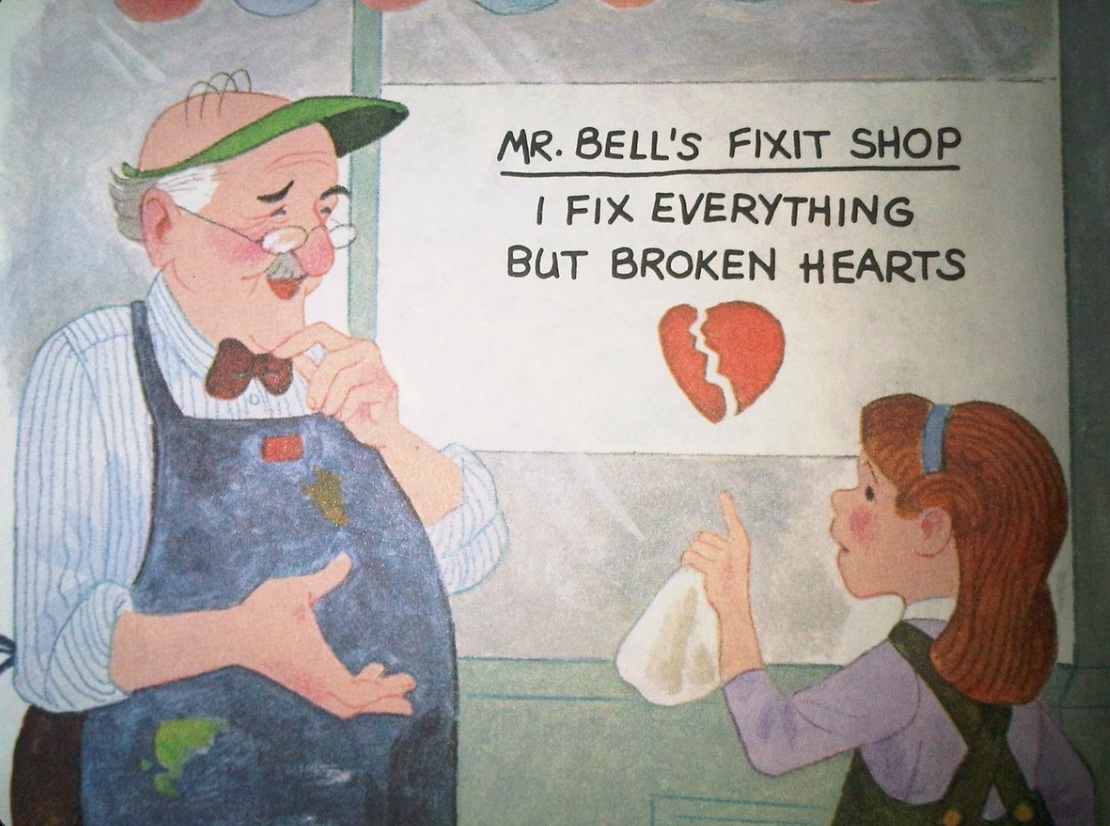February 13, 2022
If you take care of the small things, the big things take care of themselves. You can gain more control over your life by paying closer attention to the little things. -Emily Dickinson

When I was little, one of my very favorite books was a Little Golden Book called Mr. Bell’s Fix-It Shop. Upon Mr. Bell’s door was a sign that read, “I fix everything but broken hearts”- until one day when he meets Jill. She brings Mr. Bell her doll, who has been chewed up by the dog. You can certainly guess how Jill feels when her beloved doll is brought back to life, and how his sign is amended by the end of the book. Yes, Mr. Bell fixes everything, even broken hearts. To think that one could have that impact on someone with such a simple gesture, it filled my own little heart with glorious warmth as I read the story over and over again.
Mending is such a simple domestic task, and yet it has so much to offer young children. Fixing broken or torn belongings, instead of disposing of them, offers a model of living that is more sustainable for the earth. It communicates that we want our things to endure, having less of an impact upon the earth as we continue to harvest from it to manufacture new things. It cultivates reverence and appreciation for our belongings without having to say we are thankful.
In my class at the Rose Rock School, “Broken Toy Tuesday” was part of our monthly rhythm. Torn books, unraveled hats and snagged aprons, cars with missing wheels and puppets with missing eyes, frayed baskets and more were all pulled out of “The Land of Broken Toys” to be inspected for what could be mended. We took out glue, sand paper, hand tools and sewing baskets, and spent our morning giving special attention to each item. Some items would be worked on for several days, others took just five minutes, and occasionally one couldn’t be fixed; but all of the children were invested in the activity and were truly delighted when we could bring new life to their cherished classroom items.
On a physical level, teaching our children how to mend- whether gluing and sanding, or sewing- offers a variety of opportunities for fine motor coordination and planning development, but the task is imbued with much deeper meaning. It serves as the metaphor that my childhood book suggests: what is broken can be fixed, what is hurt can be healed. We can forgive ourselves, and others, for transgressions and try to make things better. Sometimes mending can take a long time and can be tedious, but dedicating oneself to such work is a worthwhile task. As it goes with the belongings we mend, so it goes with the people we help to heal- it is often through this difficult work that their most beautiful expression is manifested.


How thrilled I was to see this one. Last year I was telling an ongoing daily story about Mr. Fixit and the sign on his shop which said…I can fix anything!
And he did, day after day, week after week from the mundane to the fantastic. We had a lot of fun with this story from my imagination woven with situations from our daily lives and loves.
THANK YOU! I will try to get a copy of this book through my local online used book store.
Acacia, this is so beautifully written. What a perfect Valentines gift. Thank you! ❤️